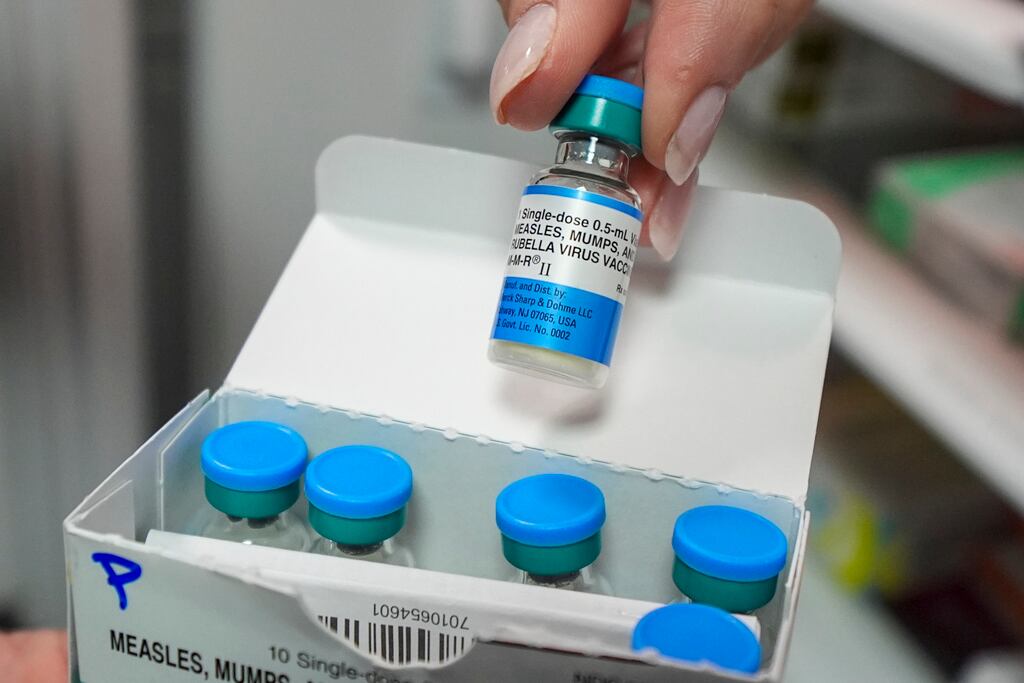NEW YORK (AP) According to federal data released Thursday, the percentage of children with exemptions increased to an all-time high, while kindergarten immunization rates in the United States decreased slightly last year.
The percentage of children exempt from vaccination requirements increased from 3.7% to 4.1% in the previous year. The exemption rate is smashing records for the third consecutive year, and the great majority of parents are refusing vaccinations for non-medical reasons.
In contrast, 92.5% of kindergarteners in 2024–25 received the mandatory measles, mumps, and rubella vaccinations, a modest decrease from the year before. The immunization rate was 95% prior to the COVID-19 pandemic, which is the threshold at which a single infection is unlikely to cause an outbreak or cluster of diseases.
The immunization figures were released as the United States has had more than 1,300 cases of the disease so far, making it the deadliest year in over three decades.
As stated by Dr. Sean O. Leary of the American Academy of Pediatrics, “the concern is that we’re going to see even more measles in the coming months with a further dip in the (vaccination) coverage.”
O Leary, a pediatric infectious diseases specialist at the University of Colorado, speculated that this year’s outbreaks would encourage more parents to vaccinate their kids before school starts.
Dr. Philip Huang, however, is not hopeful. This year, Texas was especially heavily hit by measles, with almost half of all cases reported nationwide. In spite of this, the state passed legislation that makes it simpler for parents to obtain exemptions for their children’s school vaccinations.
“It’s crazy,” said Huang, the health director for Dallas County.
Traditionally, the Morbidity and Mortality Weekly Report, the Centers for Disease Control and Prevention’s main publication, contains the vaccination coverage data. CDC representatives typically discuss trends and potential causes while emphasizing the value of vaccines. The government discreetly made the data available online this year and sent a statement via email in response to inquiries.
Choosing to get vaccinated is a personal choice. According to the statement, vaccination is still the best method to shield kids from dangerous illnesses like whooping cough and measles, which can cause hospitalization and long-term health issues. Parents should speak with their healthcare experts about their family’s options.
Compared to earlier, the language is more ambiguous regarding the significance of vaccinations. This is consistent with statements made by Robert F. Kennedy Jr., the former U.S. Health Secretary and a prominent opponent of vaccines before President Donald Trump appointed him to run federal health agencies.
O Leary pointed out that the CDC’s new messaging prioritizes individual freedom over public safety.
“It is very concerning that they are weakening the language or the messaging that they are sending because what they say does matter,” he said.
Because schools can act as germ cauldrons and launchpads for community outbreaks, public health officials pay close attention to kindergarten immunization rates.
Due in large part to school attendance requirements that necessitated certain vaccines, those rates remained high for years. All U.S. states and territories mandate vaccinations against measles, mumps, polio, tetanus, whooping cough, and chickenpox for children attending daycare facilities and schools.
Children who are unable to receive certain immunizations due to medical issues are eligible for exemptions in every state. Additionally, the majority provide exclusions for non-medical or religious grounds.
The proportion of kindergarteners having medical exemptions has remained constant at roughly 0.2% over the past ten years. However, the proportion of nonmedical exemptions has increased.
Policies that make obtaining exemptions more difficult or simpler, as well as local opinions among physicians and families regarding the need of vaccinating children, can all have an impact on the rates. More parents are questioning normal kid vaccinations, according to experts, as a result of online disinformation and the political polarization surrounding COVID-19 vaccines.
In Idaho, 15.4% of kindergarteners had a vaccination exemption during the previous academic year, according to CDC data. In Connecticut, however, less than 0.5 percent did.
According to O Leary, it’s encouraging that the great majority of parents still vaccinate their children. Additionally, he noted that there is a significant discrepancy between the vaccinated and exempted percentages, which suggests that there may be unresolved access difficulties.
___
The Robert Wood Johnson Foundation and the Department of Science Education of the Howard Hughes Medical Institute provide support to the Associated Press Health and Science Department. All content is entirely the AP’s responsibility.






